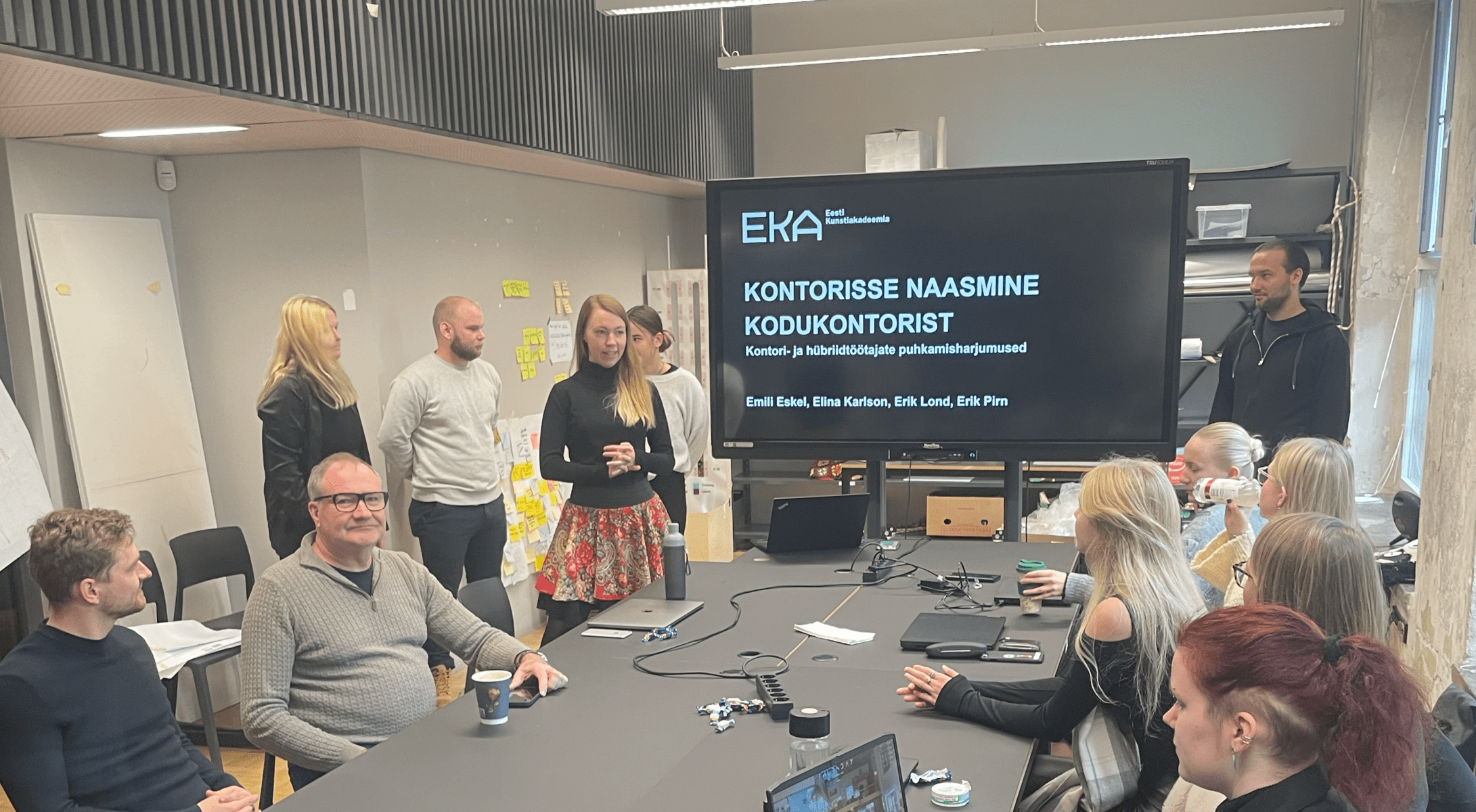
At the end of 2023, Estonian Academy of Arts students conducted research on behalf of Standard, with the goal of understanding why and how office workers use their breaks, both in the office and while working from home. This research serves as a starting point for Standard’s product development efforts, aimed at addressing the desire of the company’s clients to create motivating office environments that encourage employees to return to the office.
Based on the workforce study conducted by Ester Rünkla and Ülle Marksoo, in 2021, there were 181,600 remote workers in Estonia, accounting for 27.8% of the workforce. During the pandemic, people became accustomed to working from home, and after the pandemic, many employees were hesitant to return to the office on a daily basis. Working from home certainly has several advantages for employees, but there are also perceived negative effects.
Hybrid work is undoubtedly here to stay, but many employers in Estonia and abroad believe that employees should still spend at least some time in the office. According to Resume Builder’s August report, which surveyed 1,000 company leaders, 90% of companies plan to implement a return-to-office policy by the end of 2024. The benefits of working in the office include improved collaboration, a positive impact on company culture, enhanced mentorship and skill development, a better work-life balance, and improved working conditions, especially in terms of technology and resources that remote workers may not have.
With the described problem in mind, Estonian Academy of Arts students took on the task of determining what environments employers need to create and what the key motivators are for employees to entice them back to the office. This information serves as the basis for Standard to develop solutions that fulfill these tasks.
During the course of the research, various groups of employees were studied, including those who preferred working from home, those who wanted to work exclusively in the office, and those who preferred a hybrid work arrangement, where some work is done at home and some in the office. The aim was to understand the views, concerns, and joys of these different groups regarding working in the office. As a result of the study, user personas were created, and their main needs, problems, and habits related to office work were identified.
Based on interviews and persona creation, it was found that individual needs play a significant role in employee satisfaction and effectiveness. Different employees have different preferences, such as the need for solitude or social interaction, and office spaces should be adapted to meet these needs. By designing spaces and solutions that take into account the individuality of people, it is possible to create an environment that supports both those who prefer quiet and those who are more social. For example, dedicated workspaces or soundproof areas can help those who need focus, while open meeting rooms and common areas encourage communication and collaboration.
The study also highlighted the need to provide opportunities for physical activity to support employee health and overall well-being. When planning office spaces, options for movement, such as walking paths, mini gyms, pull-up bars, or other solutions, should be created to encourage physical activity and break the sedentary lifestyle. These solutions can support employees with active lifestyles and provide relaxation options for those who prefer solitude and quiet, thus contributing to the mental and physical well-being of office workers.
Creating a nature-inspired environment in the office could help reduce stress and improve well-being. The majority of office workers can benefit from a nature-oriented environment where they can spend time as they see fit. Elements like plants, nature views, and other nature-related features provide the opportunity to momentarily disconnect and, depending on one’s needs, engage with others or enjoy solitude and personal time.
Understanding the factors that attract and repel employees from the office can help create office environments that are more comfortable and appealing, thus supporting employee well-being. By adapting the work environment to individual preferences and needs, a user-centered office can be created that not only enhances productivity but also gives the company a competitive edge in recruiting and retaining employees.
The study revealed that office workers have a wide range of desires and needs when it comes to choosing their work location. Not all of these desires can be fulfilled, so a specific focus was placed on finding solutions for how employees spend their break times in the office. The goal of further collaboration with Standard is to create a solution that helps office workers create the necessary relaxation and rest areas to support their satisfaction and productivity in office work.
The research was conducted by Estonian Academy of Arts students Erik Pirn, Erik Lond, Elina Karlson, and Emili Eskel, under the guidance of Paula Koppel.